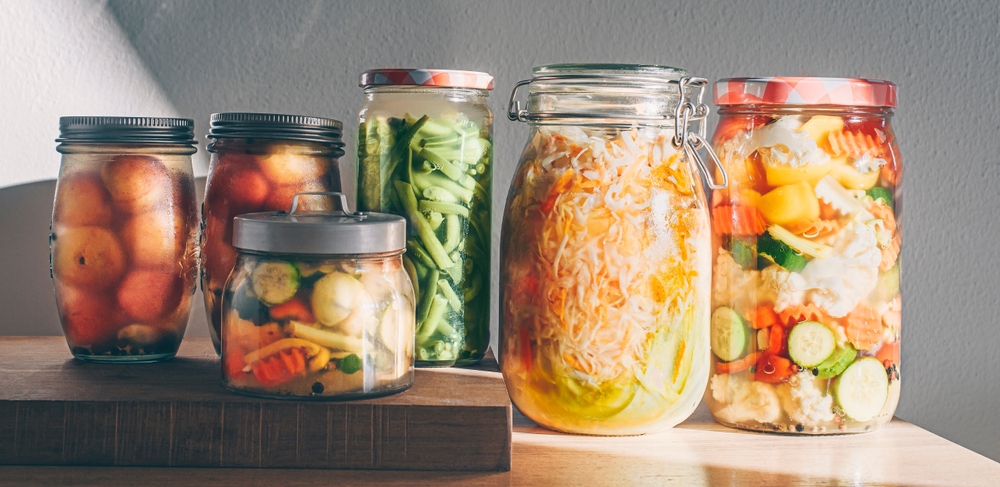Shelf-Life and Storage Tips for Pantry Preserves
Practical guidance for storing homemade and store-bought preserves can extend usability, maintain flavor, and reduce waste. This article covers shelf-life expectations and storage strategies for common methods like pickling, fermentation, and canning, plus tips for condiments, marinades, brining, seasonal produce, and charcuterie pairings.

Proper storage and clear shelf-life expectations help preserves remain safe and flavorful while supporting sustainability in the kitchen. Whether you work with quick pickles, long-fermented vegetables, or jars from a canning day, understanding how preservation methods interact with temperature, light, and oxygen will determine how long a product remains at peak quality. This article outlines practical storage tips, how different techniques affect shelflife, and sensible ways to plan uses and pairings so your pantry contributes to both meals and reduced food waste.
How does preservation influence shelf life?
Preservation methods such as pickling, fermentation, and canning change how long food stays usable by altering acidity, salt concentration, moisture, or oxygen exposure. Acidic pickles (vinegar-based) typically resist spoilage as long as acidity is maintained, while fermented foods rely on lactic acid and beneficial microbes to create a stable environment. Canning seals food in a sterile jar to block new microbial growth, but heat-treated goods still depend on proper seals and storage conditions. Shelf life varies by method and ingredient—high-acid preserves generally last longer at room temperature than low-acid ones.
What should you know about pickling and brining?
Pickling and brining use acid and salt to preserve texture and flavor. Quick pickles stored in the refrigerator often stay crisp and palatable for weeks to a few months, while shelf-stable, heat-processed pickles follow canning guidelines for unopened jars. Brining (saltwater solutions) is common for olives, vegetables, and some charcuterie steps; high-salt brines can inhibit spoilage but still require clean handling and cool storage. Label jars with dates, keep brine-covered solids submerged, and discard if jars show signs of bulging, off-odors, or mold.
How should fermentation and canning be stored?
Fermented foods like sauerkraut or kimchi mature over time; refrigeration slows fermentation and extends flavor stability, while unopened fermented products stored cool and dark can last several months. For home canning, follow tested guidelines for processing times and pressure or water-bath methods appropriate to the acidity of the food. Unopened, properly canned jars stored in a cool, dark place can maintain quality for a year or more; once opened, refrigerate and use within a relatively short period depending on the product. Regularly inspect seals and discard compromised jars.
How to manage condiments, marinades, and umami-rich preserves?
Condiments and marinades often include oil, acid, sugar, or salt—each ingredient affects storage. Vinegar-based sauces and soy- or miso-based umami condiments resist spoilage through acidity and salt but may change in color or texture over time. Oil-based preserves can develop rancidity if exposed to heat or light; store them in cool, dark cabinets or the refrigerator depending on ingredients. For multi-ingredient recipes, check for separation, off-odors, or cloudiness and follow recipe notes for refrigeration after opening.
How do seasonal produce and pairings affect usage?
Seasonal harvests encourage bulk preservation projects. Think about intended pairings—preserves made from summer fruits may pair well with cheese boards or charcuterie, while brined vegetables and fermented condiments complement roasted or grilled proteins. Planning pairings helps prioritize which jars to make and use sooner, reducing waste. Rotate stock so older jars are used first and label preserves with the date and suggested pairings to streamline meal planning and maintain quality across seasons.
What sustainable storage and charcuterie tips help reduce waste?
Sustainable storage practices include regular inventory checks, smaller-batch recipes, and reusing clean glass jars. For charcuterie, store cured meats and artisanal cheeses at recommended temperatures and use preserves that balance salt, acidity, and umami to enhance flavor without overpowering. Minimize single-use packaging, compost trimmings, and preserve excess produce with appropriate methods—fermentation, quick pickling, or making chutneys—so surplus becomes planned pantry variety rather than waste.
Conclusion
Understanding how preservation methods interact with storage conditions helps maintain flavor, safety, and useful shelflife for pantry preserves. Clear labeling, appropriate temperatures, and attention to visual and olfactory cues allow you to use preserves effectively and sustainably. Thoughtful planning around seasonal ingredients and pairings ensures jars contribute to balanced meals and reduced waste while preserving the character of each recipe.





